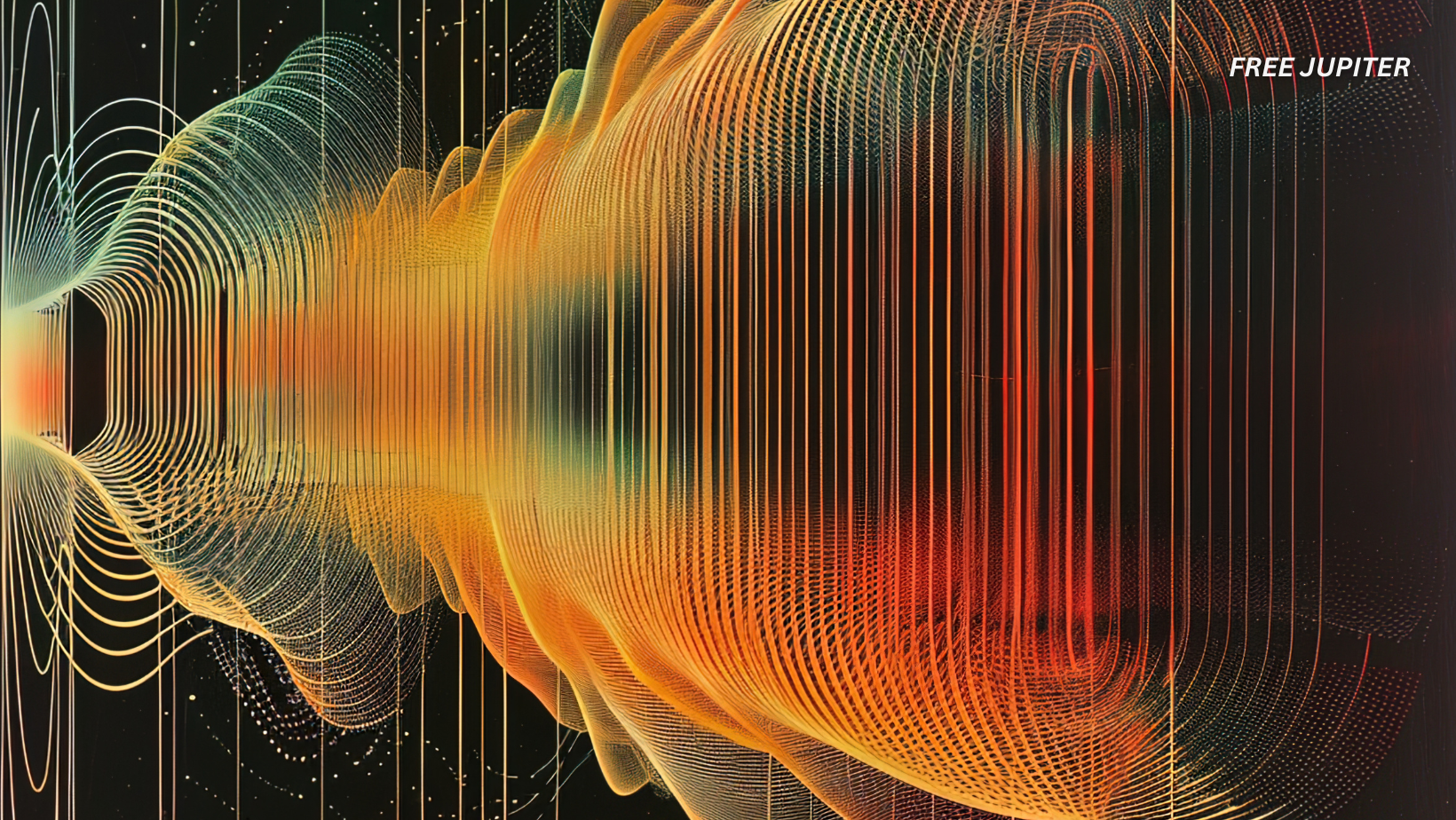Friendly Note: FreeJupiter.com shares general info for curious minds 🌟 Please fact-check all claims—and always check health matters with a professional 💙
A strange flicker in the cosmos has caught the attention of astronomers around the world — and it’s not just twinkling with radio waves. It’s flashing X-rays, too. A recently uncovered cosmic object, designated ASKAP J1832-0911, has baffled researchers due to its bizarre behavior: every 44 minutes, it lights up for about two minutes, emitting bursts in both radio and X-ray wavelengths.
This remarkable finding marks the first time that a so-called long-period transient (LPT) has been observed shining in X-rays. These unusual space oddities are still relatively new on the astronomical scene, having only been discovered within the last few years. This particular object is offering scientists a rare and puzzling glimpse into a phenomenon that refuses to fit neatly into any known category of cosmic behavior.
Published in the prestigious journal Nature, the study titled Detection of X-ray Emission from a Bright Long-Period Radio Transient dives deep into this perplexing find. The research team behind the discovery is based at the International Center for Radio Astronomy Research (ICRAR) and includes a global network of collaborators with expertise ranging from radio astronomy to high-energy astrophysics.
A Two-Minute Beacon in a 44-Minute Cycle
ASKAP J1832-0911 is located within the Milky Way, approximately 15,000 light-years from Earth. The object was initially picked up by the Australian Square Kilometre Array Pathfinder (ASKAP), a powerful radio telescope operated by CSIRO and based on Wajarri Yamaji land in Western Australia. Its wide-angle view of the sky allows it to scan vast areas quickly, making it ideal for detecting rare signals.
While ASKAP captured the object’s radio pulses, NASA’s Chandra X-ray Observatory — by cosmic coincidence — happened to be observing the same region at the same time. This fortunate overlap allowed astronomers to determine that the object was not just flashing radio bursts, but was also emitting X-rays in lockstep with those signals.
“Finding X-rays from ASKAP J1832-0911 was like stumbling upon a hidden gem in the cosmos,” said Dr. Ziteng “Andy” Wang, lead author of the study and a researcher at Curtin University’s node of ICRAR. “The ASKAP telescope surveys broad sections of the night sky, whereas Chandra focuses on narrow regions. So having both instruments catch the same event simultaneously was an extraordinary stroke of luck.”
Read more: Scientists Once Drilled So Deep Into the Center of the Earth, They Knocked on the Mantle’s Door
What on Earth — or in Space — Is It?
Long-period transients are a relatively recent addition to the astronomical lexicon. They’re a peculiar kind of radio-emitting object that lights up for brief periods after long gaps — not seconds or milliseconds, like pulsars, but in minutes or even hours. Since ICRAR researchers first spotted one of these enigmatic objects in 2022, astronomers have identified around ten similar cases around the world. Yet ASKAP J1832-0911 remains unique in its dual-mode flickering.
Dr. Wang explains that while there are several working theories, none of them fully account for what’s going on. One possibility is that it could be a magnetar — an extremely dense and highly magnetized neutron star, which is the collapsed core of a once massive star. Another candidate is a binary star system, where a highly magnetized white dwarf interacts with a stellar partner.
However, both of these ideas come with caveats. Neither entirely explains the perfectly timed bursts, the simultaneous radio and X-ray emissions, or the long quiet periods between flashes.
“This object is defying our expectations,” Dr. Wang remarked. “It doesn’t behave like anything we’ve previously documented. It may belong to a whole new category of stellar remnants or represent an entirely unfamiliar cosmic process.”
The Mystery Deepens — and Broadens
Adding to the intrigue is the object’s ability to emit in two very different parts of the electromagnetic spectrum. Radio waves are relatively low-energy signals, while X-rays are on the higher-energy end. For an astronomical object to produce both kinds of emissions in such a synchronized fashion, there must be some powerful and as-yet-unidentified mechanism at play.
“This discovery pushes us to rethink what’s physically possible in these kinds of systems,” said Professor Nanda Rea, second author of the study and a scientist at both the Institute of Space Sciences (ICE-CSIC) and the Catalan Institute for Space Studies (IEEC) in Spain. “The fact that it shows up in X-rays means there’s some very energetic process going on. We’re not entirely sure what, but it’s exciting to consider the possibilities.”
According to Professor Rea, the object is just the tip of the proverbial iceberg. “If we’ve found one, there are probably many more hiding out there,” she said. “This one discovery suggests we’ve only scratched the surface. And now that we know to look for both radio and X-ray emissions, our odds of finding more have greatly increased.”
Read more: England Has Officially Started To Give Out New Injections That Treat 15 Cancers
A Team Effort Spanning Continents and Specialties
The detection and subsequent analysis of ASKAP J1832-0911 stand as a testament to international scientific collaboration. Researchers from Australia, Europe, and North America worked together, combining their specialized tools and knowledge to decode the cosmic signal.
One of the key achievements was matching the timing of the radio bursts with the X-ray flares. Doing so required careful coordination between observatories, as well as the ability to sift through mountains of astronomical data.
“The level of teamwork that went into this discovery was truly remarkable,” said Professor Rea. “It’s one of those rare moments in science where everything comes together — technology, timing, and talent — to reveal something completely unexpected.”
What This Could Mean for Astrophysics
Although astronomers remain cautious about jumping to conclusions, the discovery of ASKAP J1832-0911 raises a tantalizing possibility: that there are still undiscovered types of stellar remnants out there, waiting to be found. These may not follow the well-worn paths of neutron stars, black holes, or white dwarfs. Instead, they could represent intermediate or hybrid forms — or perhaps something entirely new.
Furthermore, the emission of high-energy X-rays opens the door to new theoretical models. In the past, X-rays were not considered a typical feature of long-period transients. Their presence in ASKAP J1832-0911 forces theorists to return to the drawing board and reexamine the energy dynamics behind such phenomena.
“This is a puzzle that may take years — or decades — to fully solve,” Dr. Wang acknowledged. “But every clue we gather brings us closer to understanding the bigger picture of our universe and the strange mechanisms at work within it.”
Read more: Scientists Say That We Are Ready To Begin Cloning Humans
What’s Next in the Hunt for Cosmic Oddballs?
Armed with this new knowledge, astronomers plan to cast a wider net in future sky surveys. The goal is to find more objects like ASKAP J1832-0911, especially those that shine across multiple wavelengths. With increasingly sophisticated telescopes coming online in the next few years — including the Square Kilometre Array, which will dwarf ASKAP in sensitivity — the prospects for fresh discoveries are promising.
Moreover, the study underscores the importance of real-time data coordination between observatories focused on different wavelengths. As the ASKAP and Chandra collaboration has shown, serendipity favors the prepared mind — and a well-networked telescope array.
“We’re living in a golden age of astronomy,” said Dr. Wang. “Not just because of the tools we have, but because of how well we can collaborate across the globe to unravel the mysteries of the universe.”










